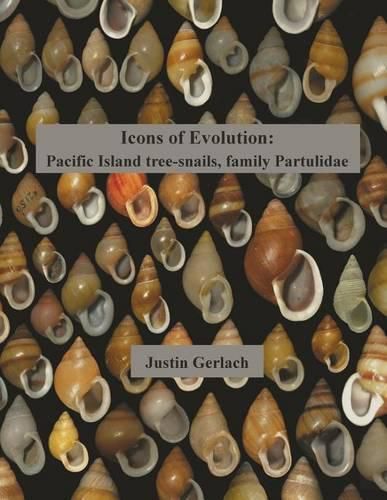Readings Newsletter
Become a Readings Member to make your shopping experience even easier.
Sign in or sign up for free!
You’re not far away from qualifying for FREE standard shipping within Australia
You’ve qualified for FREE standard shipping within Australia
The cart is loading…






This title is printed to order. This book may have been self-published. If so, we cannot guarantee the quality of the content. In the main most books will have gone through the editing process however some may not. We therefore suggest that you be aware of this before ordering this book. If in doubt check either the author or publisher’s details as we are unable to accept any returns unless they are faulty. Please contact us if you have any questions.
The partulid tree-snails of the Pacific Islands are today best known for their tragic recent history. Following the introduction of predatory snails a third of partulid species are now extinct and almost all others threatened with extinction. As most of these extinctions took place in a 20 year period this is one of the most dramatic rates of extinction ever recorded. Before Partula became icons of extinction, they were central to the development of our understanding of evolutionary biology. This started with the pioneering field studies of evolution by Henry Crampton in 1908 and led to laboratory genetics studies of the inheritance of genetic traits.
Crampton’s great work on Partula was unfinished by the time of his death. This book marks the centenary of the publication of Crampton’s first volume by completing his work, and updates it with a full revision of the taxonomy, and comprehensive accounts of what is known of the history, ecology, evolution and conservation of the family. This revision consolidates the 344 names applied to the family into 103 species, including the description of 6 new species. Each valid species is described with full references and synonyms, distribution maps, and photographs of 842 shells: type specimens of each species and all colour varieties. This is based on measurements of 125,824 shells, dissections of 1,244 snails and the analysis of 30 years of data from the captive breeding programme.
$9.00 standard shipping within Australia
FREE standard shipping within Australia for orders over $100.00
Express & International shipping calculated at checkout
This title is printed to order. This book may have been self-published. If so, we cannot guarantee the quality of the content. In the main most books will have gone through the editing process however some may not. We therefore suggest that you be aware of this before ordering this book. If in doubt check either the author or publisher’s details as we are unable to accept any returns unless they are faulty. Please contact us if you have any questions.
The partulid tree-snails of the Pacific Islands are today best known for their tragic recent history. Following the introduction of predatory snails a third of partulid species are now extinct and almost all others threatened with extinction. As most of these extinctions took place in a 20 year period this is one of the most dramatic rates of extinction ever recorded. Before Partula became icons of extinction, they were central to the development of our understanding of evolutionary biology. This started with the pioneering field studies of evolution by Henry Crampton in 1908 and led to laboratory genetics studies of the inheritance of genetic traits.
Crampton’s great work on Partula was unfinished by the time of his death. This book marks the centenary of the publication of Crampton’s first volume by completing his work, and updates it with a full revision of the taxonomy, and comprehensive accounts of what is known of the history, ecology, evolution and conservation of the family. This revision consolidates the 344 names applied to the family into 103 species, including the description of 6 new species. Each valid species is described with full references and synonyms, distribution maps, and photographs of 842 shells: type specimens of each species and all colour varieties. This is based on measurements of 125,824 shells, dissections of 1,244 snails and the analysis of 30 years of data from the captive breeding programme.